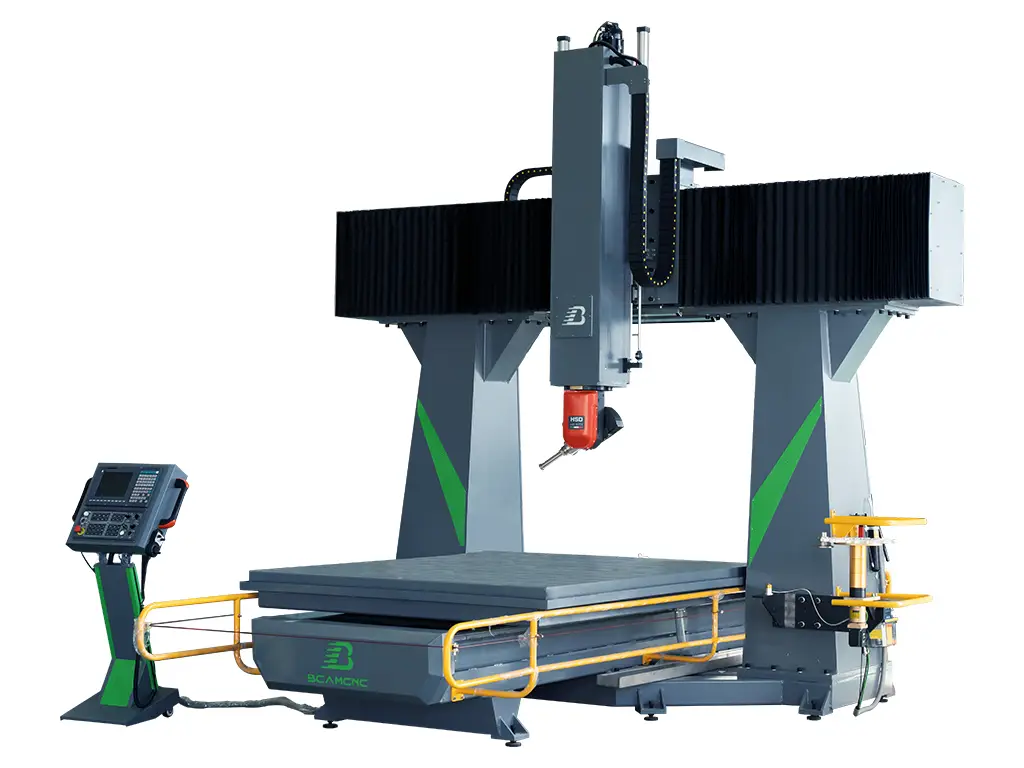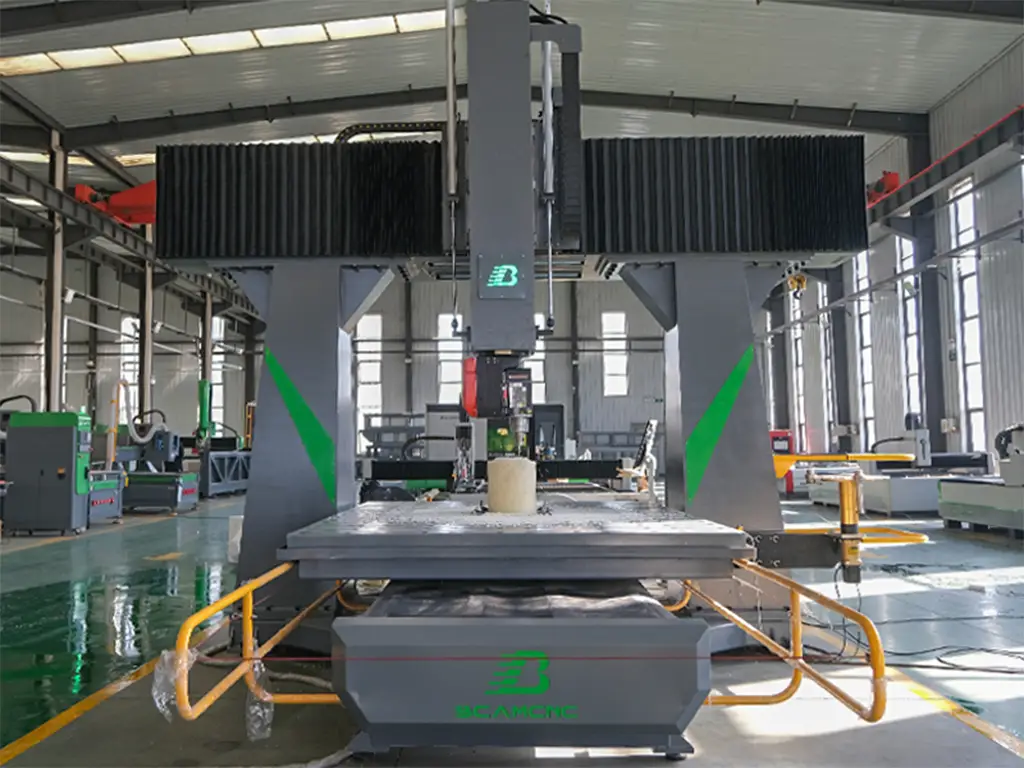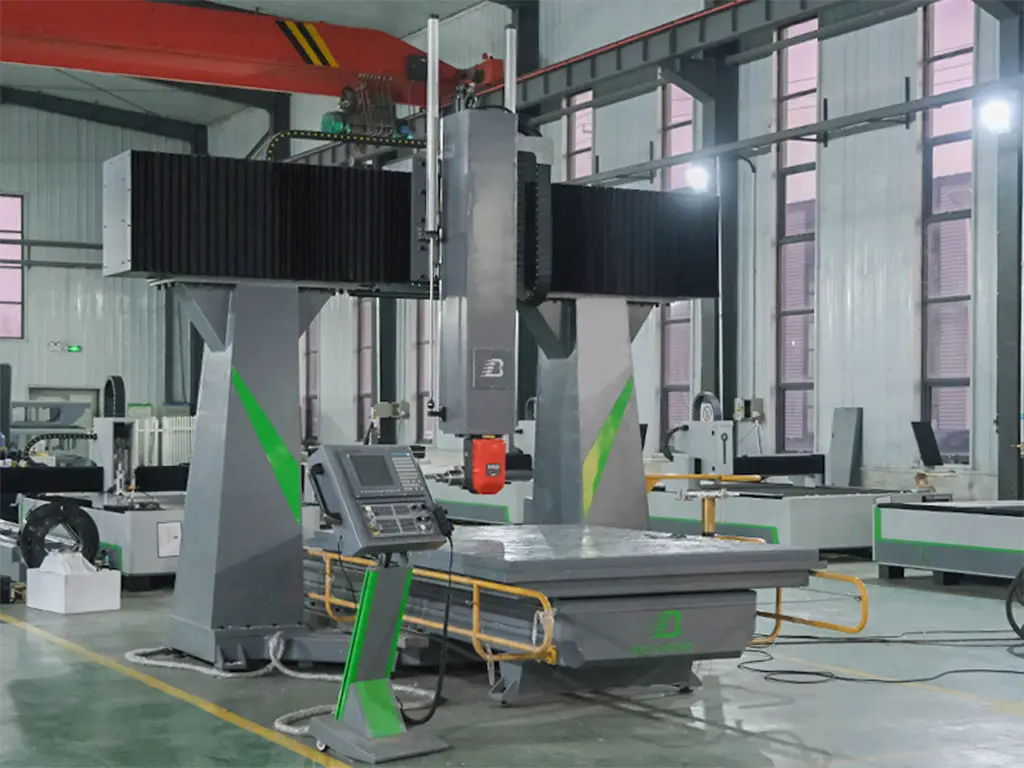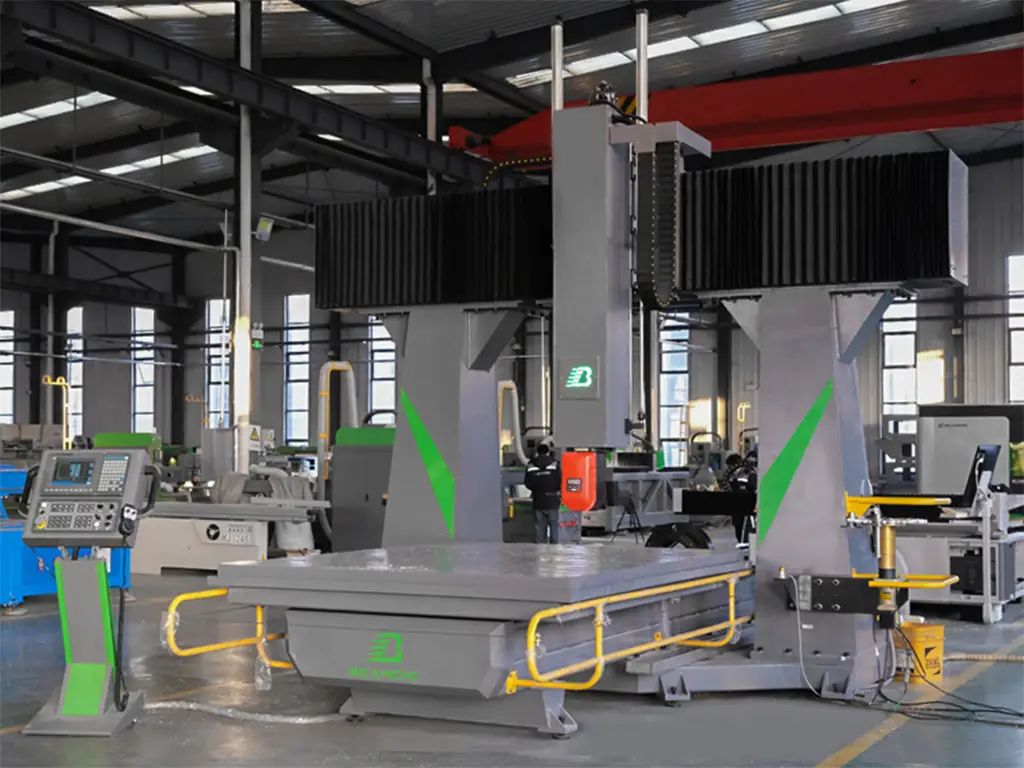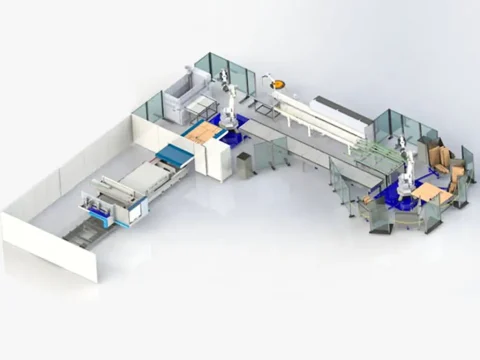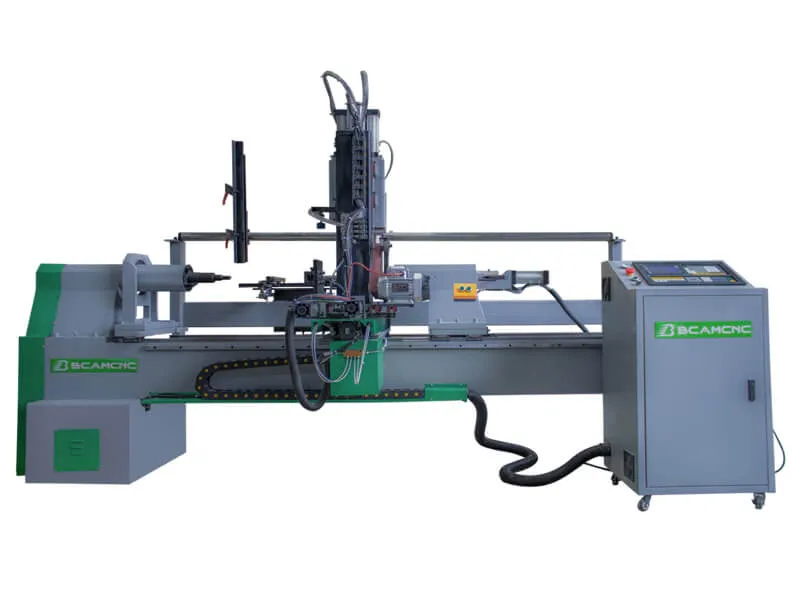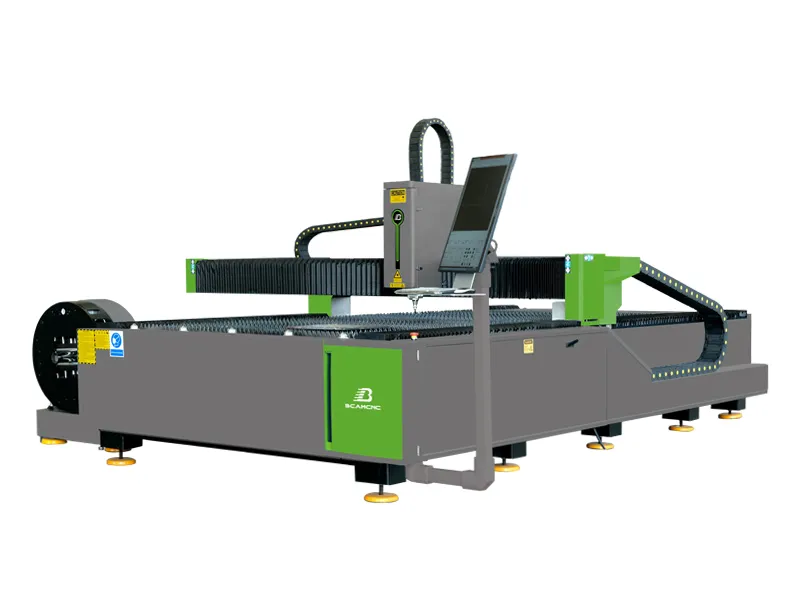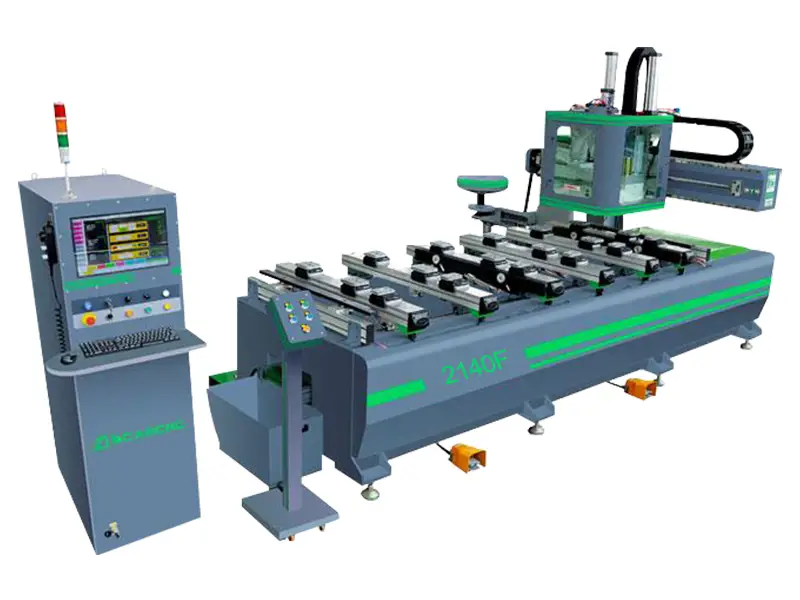5-Axis CNC Router Projects: Machining Composite Materials with Precision
Composite materials are rapidly transforming the manufacturing landscape due to their unique combination of lightweight strength, durability, and flexibility. Industries ranging from aerospace and automotive to marine, sports equipment, and architectural design increasingly rely on composites for critical components. However, machining these advanced materials poses significant challenges, including delamination, fiber pull-out, and material warping. Traditional machining methods often fall short when precision and consistency are essential. This is where BCAMCNC 5-axis CNC routers provide a remarkable solution, offering unparalleled accuracy, versatility, and efficiency for composite material projects.
Why Choose a 5-Axis CNC Router for Composite Materials?
1.What Advantages Do Multi-Axis CNC Routers Offer?
Unlike 3-axis or 4-axis machines, 5-axis CNC routers allow simultaneous movement along five planes. This capability is crucial for machining complex geometries, curved surfaces, and intricate 3D designs commonly found in composite components. By maintaining consistent tool orientation relative to the workpiece, 5-axis routers reduce cutting forces and minimize the risk of delamination, ensuring a high-quality finish every time. For manufacturers and workshop operators, this translates into fewer errors, reduced scrap, and higher overall productivity.
2.How Do They Reduce Material Waste and Improve Efficiency?
Material costs for composites such as carbon fiber reinforced plastics (CFRP), fiberglass, and hybrid laminates are high. Every mistake or wasted sheet can significantly impact production costs. BCAMCNC 5-axis routers optimize cutting paths, maintain precise tolerances, and execute multi-surface operations in a single setup. These features reduce the need for repositioning or multiple tool changes, significantly cutting material waste and saving both time and money.
3.Why Are 5-Axis CNC Routers Better Than 3-Axis or 4-Axis Machines?
While 3-axis routers are suitable for flat or simple surfaces and 4-axis routers handle cylindrical shapes, neither can achieve the multi-directional machining required for advanced composite components. A 5-axis CNC router excels in creating contoured panels, fuselage sections, automotive body parts, and decorative or structural elements, delivering complex results in a single setup without compromising accuracy or material integrity.
Applications Across Industries
1.Aerospace Components: Can 5-Axis CNC Routers Handle Complex Curves?
Aerospace parts often feature highly curved surfaces and intricate internal geometries. Wing ribs, fuselage panels, and structural supports require machining that adheres to tight tolerances while maintaining material strength. BCAMCNC 5-axis CNC routers enable aerospace manufacturers to cut, mill, and drill composite components with precision, minimizing post-processing and ensuring reliability in high-performance applications.
2.Automotive Parts: How Do They Improve Lightweight Panel Production?
In the automotive industry, CFRP and fiberglass are widely used for body panels, structural reinforcements, and interior trims. 5-axis CNC routers ensure smooth edges, consistent thickness, and perfect contours across each part. Optimized feed rates and spindle speeds prevent fiber pull-out and heat damage, while automatic tool change systems allow multi-step operations to proceed efficiently. This combination enhances both quality and throughput, giving manufacturers a competitive edge.
3.Marine Industry: Why Are They Ideal for Hulls and Deck Panels?
Boat hulls, decks, and interior components often have complex curves and multi-dimensional surfaces. 5-axis CNC routers allow manufacturers to machine these components accurately, reducing assembly challenges and ensuring consistent quality. Automated tool paths also reduce production time and labor costs, making high-precision composite marine parts more accessible and reliable.
4.Sports & Recreation: How to Create Custom High-Performance Equipment?
From carbon fiber bicycles to snowboards and kayaks, composite materials are essential for high-performance sporting goods. 5-axis CNC routers enable creators to craft intricate designs, maintain consistent fiber orientation, and achieve exact dimensions, resulting in durable, lightweight, and aesthetically impressive products. Small workshops and start-ups can now compete with larger manufacturers by leveraging these advanced capabilities.
5.Industrial Prototyping: Can 5-Axis Routers Accelerate Prototype Development?
Rapid prototyping is crucial for product testing, client approvals, and iterative design. 5-axis CNC routers allow engineers to produce fully functional prototypes from composite materials that replicate final product performance. This capability shortens development cycles, reduces trial-and-error costs, and helps businesses launch products faster with high confidence in quality and functionality.
6.Architectural & Decorative Elements: How to Achieve Complex Designs and Inlays?
Composites are not limited to structural applications; they also enable creative architectural and decorative projects. Panels, wall features, furniture inlays, and custom interior elements benefit from 5-axis machining, which allows intricate carvings, multi-surface detailing, and precise dimensional accuracy. The ability to execute complex designs in a single setup reduces manual labor while maintaining high-quality finishes, making creative projects more efficient and scalable.
Tips for Successful Composite Machining
1.How to Select the Right Tools and Spindle Speeds?
Choosing the correct cutting tools and spindle speeds is vital when working with composites. High-speed spindles paired with diamond-coated or carbide tools reduce friction and heat, preventing fiber pull-out and delamination. BCAMCNC provides guidance on tool selection for various composite types, ensuring optimal performance and longevity of both tools and machines.
2.How to Optimize Feed Rates and Cutting Paths?
Proper feed rates and cutting strategies minimize stress on composite layers. BCAMCNC 5-axis routers utilize advanced CAM software to calculate optimized paths, allowing multi-surface operations without repeated repositioning. This increases throughput, ensures precision, and reduces the likelihood of errors or material damage.
3.What Safety Measures Should Be Taken for Composite Dust and Fibers?
Machining composites generates fine dust and fibers that can be hazardous. BCAMCNC routers integrate dust extraction systems and safety enclosures to protect operators and maintain a clean workspace. Adhering to safety protocols ensures a healthier work environment while protecting the integrity of the machined components.
How 5-Axis CNC Routers Improve Workflow and Productivity
1.How to Scale from Prototyping to Full Production?
BCAMCNC 5-axis CNC routers provide the flexibility to transition seamlessly from small-batch prototyping to large-scale production. By maintaining consistent quality and repeatability, workshops can expand operations without changing equipment, supporting both custom orders and mass production.
2.How Does Automatic Tool Change (ATC) Boost Efficiency?
Automatic tool change systems reduce downtime by switching between milling, drilling, or finishing tools quickly and accurately. This capability is especially valuable for projects involving multiple steps or complex geometries, increasing throughput and reducing the need for manual intervention.
3.Can Small Workshops Compete with Large Manufacturers Using 5-Axis CNC Routers?
Yes. The combination of multi-axis precision, automated tool change, and optimized machining strategies allows small workshops to produce high-quality composite components that rival those from larger manufacturers. This levels the playing field, opening opportunities for innovation and niche market growth.
Conclusion: Why 5-Axis CNC Routers Are Essential for Composite Projects
BCAMCNC 5-axis CNC routers empower manufacturers and creators to tackle complex composite projects with confidence. From aerospace and automotive components to marine parts, sporting equipment, architectural features, and industrial prototypes, these routers deliver precision, efficiency, and scalability. By reducing material waste, enhancing safety, accelerating prototyping, and enabling intricate multi-surface machining, 5-axis CNC routers unlock new creative and commercial opportunities. For any business working with composites, BCAMCNC provides reliable, high-performance CNC solutions that transform ideas into high-quality, profitable, and visually striking products.
